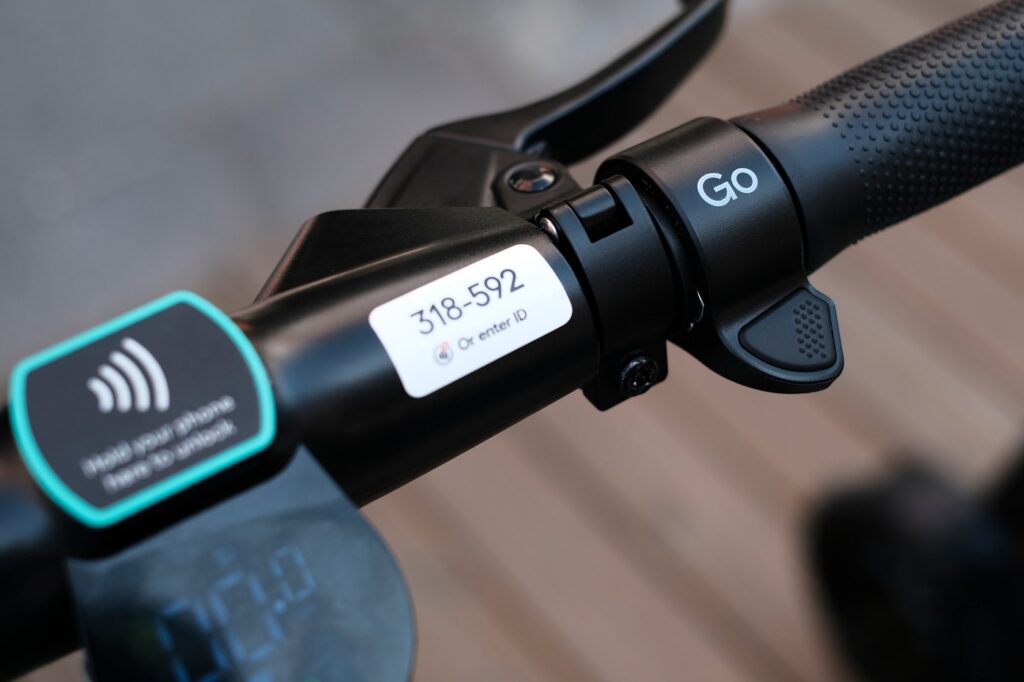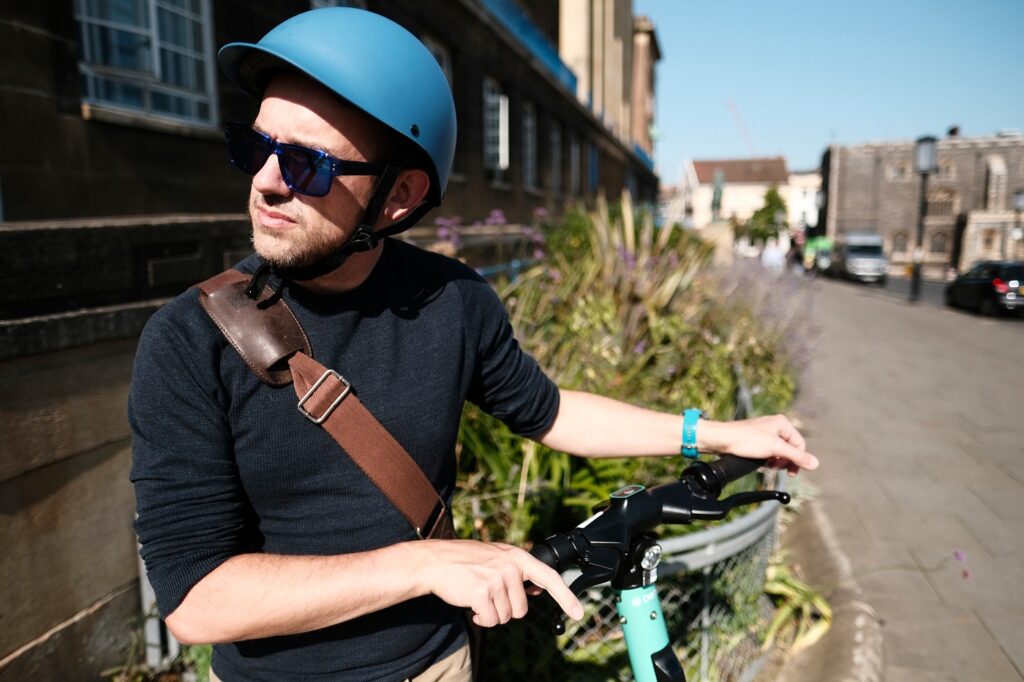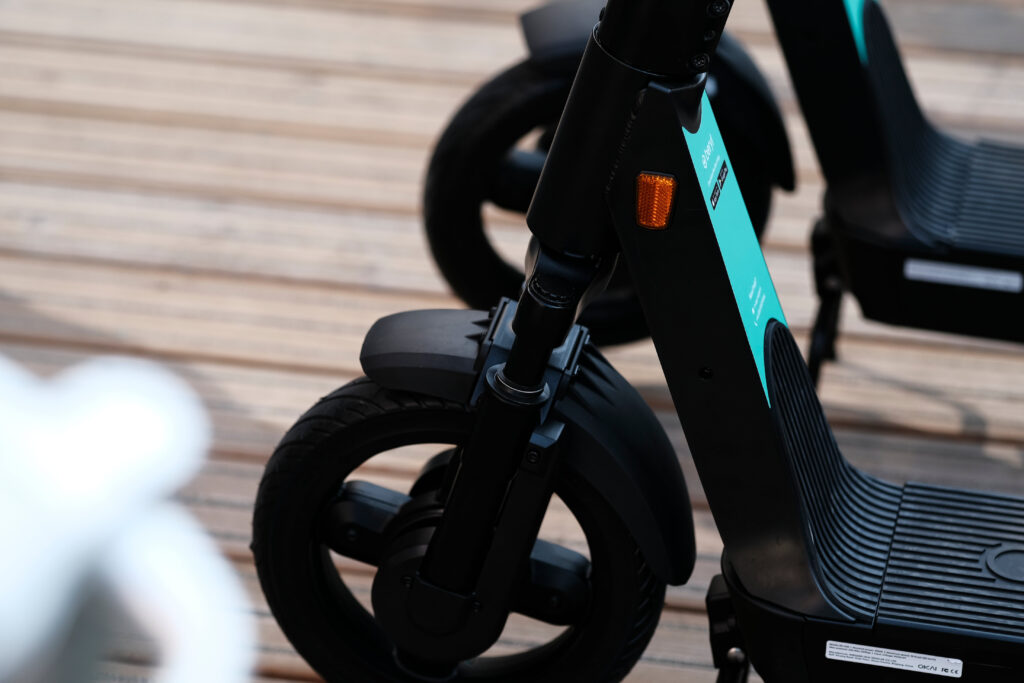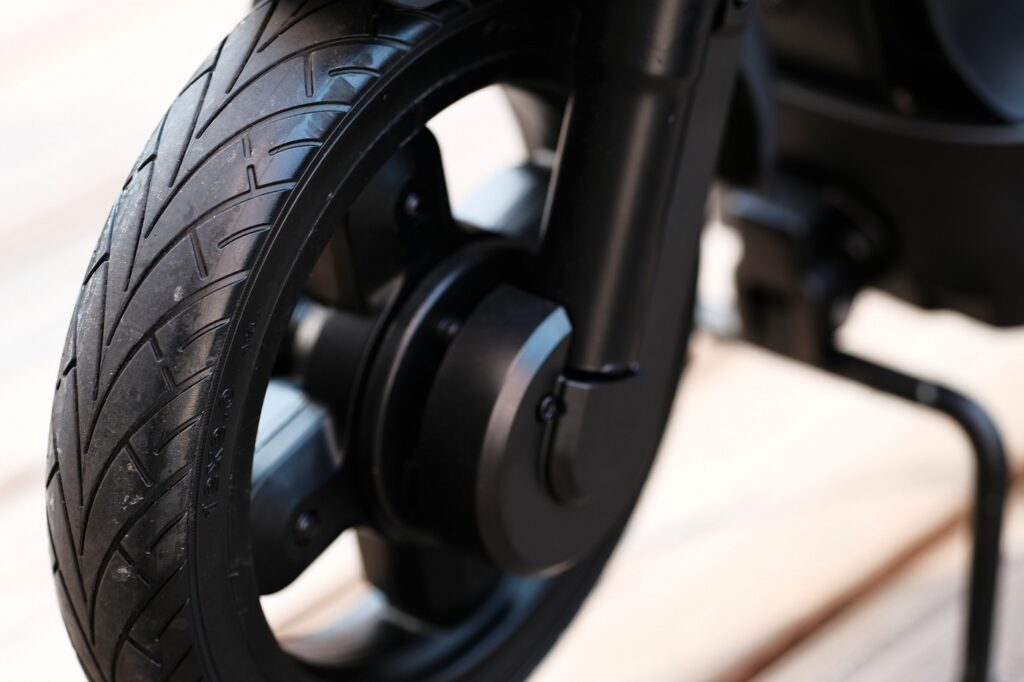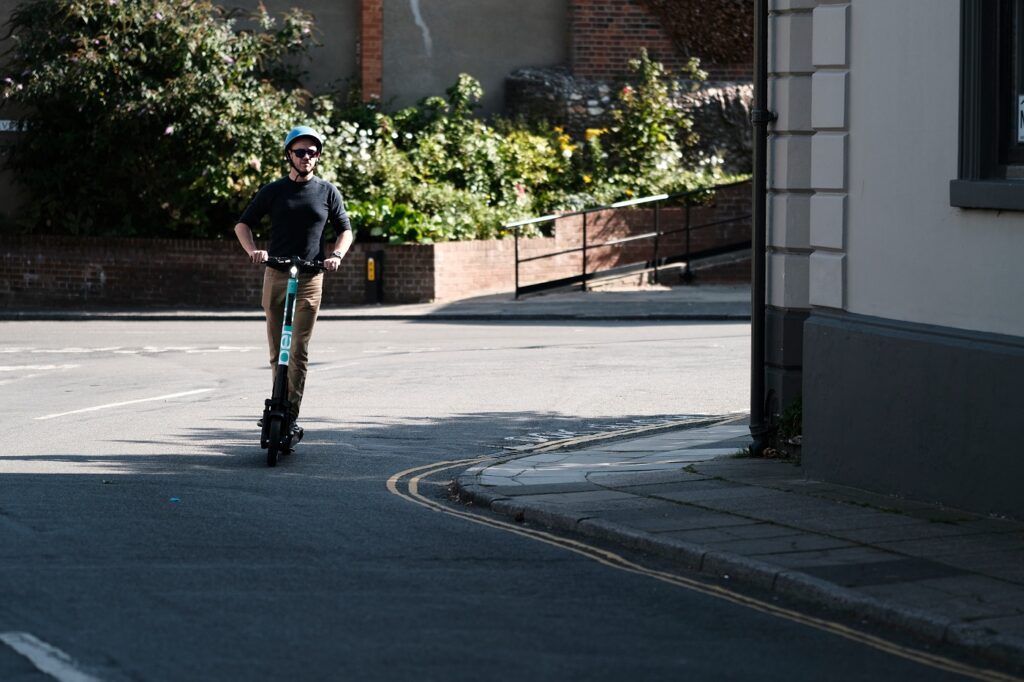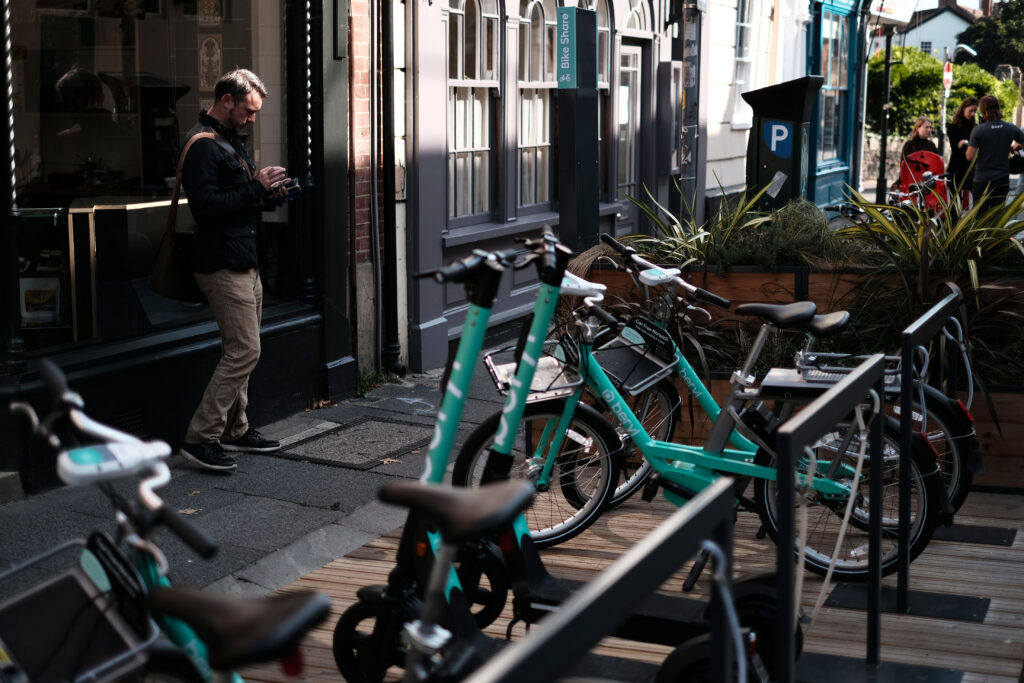Yes, that headline is an Alan Partridge reference, because, well, Norwich. It’s a city that has beautiful architecture, a Partridge statue – and Beryl.
London-based Beryl has been operating a shared bike and e-bike scheme in Norwich for a few months and has now added a third vehicle to its line-up. The latest model is, as you’ve probably guessed, an e-scooter. This one is based on an Okai ES400 and wears a fetching turquoise gilet.
The ES400 is very much a safe bet for the rental e-scooter market. It is smooth, simple to use (for the public) and is easy to manage (for the operator; it has swappable batteries, for example, meaning the entire scooter doesn’t need to be hauled away for recharging).
1: Controls
A bell is integrated into the handlebar, much like the Segway-branded, Xiaomi-made e-scooters used by brands like Spin. Unlike that model, the Beryl has two separate braking inputs, with two levers on the handlebars: one operates the front brake and the other the rear.
There are no indicators, unlike the Tier Four, but that’s not unusual. It does mean that indicating requires riders to take a hand off the handlebars, which newer and less-confident riders are very unlikely to (and probably shouldn’t) do.
The Okai display is fairly small, much closer to the one you’d find on a Segway than the larger one on a Lime-S, but most people only care about the big speedo anyway.
2: Ergonomics
The deck is easily big enough to fit both feet side by side, and this large platform also means space for a large battery – great for range, less great for conning the weighing scales.
The Beryl also adds front suspension into the mix for a more pleasant ride – which is nice but adds yet more weight. All of this does make this e-scooter quite cumbersome, but if you’re not lifting it (into photogenic areas to pose for Zag, for example), you’d probably never know.
3: Ride and handling
The most marked difference between this Okai compared to other shared e-scooters we’ve ridden is in the initial speed pickup, possibly due to the weight. As with all e-scooters, you need to get them rolling before the “go” button will start to add power. With most e-scooters, a small kick-off is enough. But with the Beryl, it seems to take much more of a kick, or even two kicks, to get up to a speed where the power will take over. If you’ve never tried another e-scooter you probably wouldn’t think anything of it, but it was a noticeable thing for our test team, especially when trying to set off on a slight incline. This may be a programming issue of course – the electric motors can be “detuned” to avoid rapid acceleration.
In Norwich, and for the time being, the e-scooters are limited to 12.5mph. This is just 3mph below the maximum legal maximum speed, but those three do make a difference to how the e-scooter feels. It’s less “rush-to-the-office” and more ‘”oh-look-at-the-nice-buildings-and-smell-the-flowers”. And that top speed is actually very hard to achieve on an incline. On one fairly steep street we tried we saw no higher than 8mph on the display.
This more sedate pace is not a bad thing. It’s not even really noticeable unless, like us, you ride lots of different e-scooters. So unless you’ve got a choice of operators with different models passing you on either side as you scoot along, that reduced speed is not an issue – apart from costing you more on the per-minute charge rate, of course. If all goes well the speed limit may be increased.
Beryl explained that this is very much a trial, and as part of that they’ll be keeping things very simple and consistent across the city, but if they need to they can easily implement different speed limits in different areas, such as parks.
4: Geofencing
What sets Beryl apart in the UK is the lack of geofenced slow zones and red zones. There’s a service area boundary which riders shouldn’t exceed but, within that, riders are free to mooch around to their hearts’ content. Bike-share company Beryl, a company created by cyclists for cyclists, thinks riders will soon get used to using scooters as they would a bicycle and stay off pavements, out of shopping centres and so on.
Another marked difference from other UK programmes is the way the Beryl sorts its parking. Although technically a dockless system, there are marked bays which are geofenced by GPS and have a physical infrastructure to lock your e-scooter to. If you lock your e-scooter in an official bay, you’re helping to keep the city tidy and that’s very much appreciated. Many the bays also have nice green leafy stuff, so earn their “parklets” moniker.
If, however, you decide not to park in a bay, you will get charged £5 – and that’s if you stay in the operating area. If you venture beyond that, the fee increases to £10. You’ll have to go a fair way, though, as even Norwich Airport is included in the service area, so you could find yourself scooting there on your way to Australia and you’d still have not taken the e-scooter out of bounds.
5: Value for money
Beryl e-scooters currently cost £1.50 to unlock and are 10p per minute to ride. Compared to other operators, that unlock fee is high (most are £1 to unlock; Ginger and Spin are free), but with a cost of just 10p per mile when other operators charge double that, or more, it soon works out better for longer journeys, and with Beryl’s service area in Norwich being so large and with a lot of bays in suburban areas, longer journeys are a real probability.
If you’re a frequent user you can buy bundles of time, which work across all three Beryl vehicles; a 100 minute block costs £5 to pre-book. You could buy in bulk if you like, but with 200 minutes at £10, 300 at £15 and 400 at £20, there’s no real incentive to go over and above the 100.
Beryl thinks that longer journeys are more comfortable by bike, so the company reckons e-scooters will cater to short trips and that users will naturally migrate to bikes and e-bikes when adding distance. And with all three available to Beryl users in one place, this British company is well placed to evaluate whether this works out over the course of the 12-month trial.
And, of course, all e-scooter riders are covered by insurance, which should give users extra peace of mind.
Overall the Beryl e-scooter is a safe, dependable and pleasant ride, and with the existing Norwich infrastructure in place, Beryl has an opportunity to show the rest of the UK (and the world) how city centres and e-scooter operators should co-exist, to the betterment of the city and the pleasure of its residents.
Back of the net!


